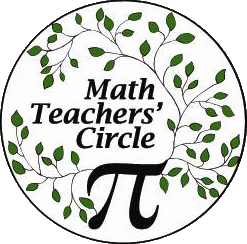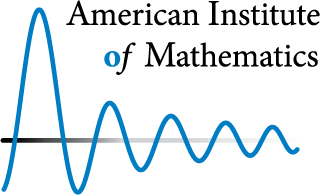
Recruiting Change for a Dollar
Not Every Pattern Leads to a Solution
Craig Collins, Elizabeth Donovan, and Cynthia Kramer
Like the MTCircular? Subscribe to our free semi-annual magazine.
Recruitment is a key component to beginning a Math Teachers’ Circle. Our location in rural western Kentucky guarantees most teachers will come from a radius of 50 miles, making substantial travel time for those participating in our circle. Before we launched with an immersion workshop in July, we felt it would be beneficial to recruit by visiting local schools. So, we offered fall and spring recruitment workshops at a regional middle school aimed at giving participants a taste of our future meetings.
Making Change
We began the spring workshop by waving a dollar bill and asking the question, “Can anyone give me change for a dollar? I’d like to get a snack from the vending machine.” After an initial scramble of people looking for their wallets, the participants were presented with bags of change that included half dollars, quarters, dimes, nickels and pennies. Different coin combinations were suggested and recorded on the board. This allowed us to pose the overarching question of the meeting: How many different ways are there to make change for a dollar?
Due to the sheer size of the task we dialed the problem back and began by asking the teachers to make change first for a nickel and then a dime. A discussion ensued on what it meant to make change: Must the amount be broken into smaller denominations, or can one simply (ex)change one coin for another? Is a dollar coin change for a dollar bill? In the end, the group decided as a whole that making change required smaller valued coins to be traded for a larger denomination.
We continued the activity and found change for a quarter as well as a half dollar. We discussed the strategies implemented by the various groups. One common approach was to use as many large-valued coins as possible and trade them out for smaller denominations. A second method was to use as many coins as possible first. Thus, some of the teachers approached the solution to the problem at hand with a top-down approach while others worked in the opposite direction. Initially everyone began by writing out the words for each coin, but they soon began using abbreviations, like P for pennies or N for nickels, and tracking data in a table in order to keep track of the ever-growing lists.
Patterns Don’t Solve Everything
 There’s one catch to this family of problems: There is no discernible pattern to the growth in the number of ways to make change as the desired amount increases from a nickel to a dollar. During the process, several patterns were discovered when making change systematically, for example the orderly “blocks” shown in Figure 1 at right. While these patterns were helpful in creating the lists, extrapolating the results did not allow the participants to solve the original problem. Thus, a seemingly simple question quickly led to an atypical scenario: The use of low-level scaffolding questions resulted in neat and satisfying patterns, but these were ultimately insufficient to solve the larger problem as the target amount was scaled up. (See Figure 2, below right.)
There’s one catch to this family of problems: There is no discernible pattern to the growth in the number of ways to make change as the desired amount increases from a nickel to a dollar. During the process, several patterns were discovered when making change systematically, for example the orderly “blocks” shown in Figure 1 at right. While these patterns were helpful in creating the lists, extrapolating the results did not allow the participants to solve the original problem. Thus, a seemingly simple question quickly led to an atypical scenario: The use of low-level scaffolding questions resulted in neat and satisfying patterns, but these were ultimately insufficient to solve the larger problem as the target amount was scaled up. (See Figure 2, below right.)
Once the final solution was reached, we discussed the answer for making change for $2, $5, and so on. We briefly introduced the notion of a generating function to consider. The generating function gives a unique way to determine the number of ways to make change for any amount without writing down every possibility, thereby giving a pattern to the seemingly unexplained growth. (Frank Morgan’s MAA Math Chat blog post “293 Ways to Make Change for a Dollar” is a great starting point for those who wish to delve further into the mathematics!)
Change-ing the Problem
 From here new problems were considered. For example, in how many ways can you make change for a dollar using exactly 50 coins? What is the maximum amount of money one can have without having change for a dollar? The immediate response to this last question was “99 cents!” However, participants soon realized that although one can only have 99 pennies without having change for a dollar, it is possible to have a collection of coins worth more than a dollar and yet not have change for a dollar. To our surprise the participants quickly determined the solution to this question as a group. One member suggested starting with three quarters, and then additional lesser-valued coins were added to the running total. The final value of $1.19 is comprised of three quarters (or one half-dollar and one quarter), four dimes, and four pennies.
From here new problems were considered. For example, in how many ways can you make change for a dollar using exactly 50 coins? What is the maximum amount of money one can have without having change for a dollar? The immediate response to this last question was “99 cents!” However, participants soon realized that although one can only have 99 pennies without having change for a dollar, it is possible to have a collection of coins worth more than a dollar and yet not have change for a dollar. To our surprise the participants quickly determined the solution to this question as a group. One member suggested starting with three quarters, and then additional lesser-valued coins were added to the running total. The final value of $1.19 is comprised of three quarters (or one half-dollar and one quarter), four dimes, and four pennies.
Given the difficulty with finding change for a dollar using exactly 50 coins, the participants were given a “homework” question: In how many ways can change for a dollar be made with exactly 19 coins? A Google Classroom was created to continue the discussion at a distance and to continue exchanging ideas on finding a solution. We believe it will prove to be an invaluable resource for maintaining connections among teachers in our highly rural area.
Reflection
Overall we felt these types of monetary problems provided engaging, classroom-adaptable entry points for teachers who were new to MTCs. Something that we particularly enjoyed about the activity is that patterns are often something that we as mathematicians search for in a problem. However, in this case, there is no simple, predictable pattern to build to an answer, encouraging participants to reach outside their comfort zones and ponder alternative strategies in order to make progress.
Craig Collins and Elizabeth Donovan are Assistant Professors, and Cynthia Kramer is an Instructor, in the Department of Mathematics and Statistics at Murray State University. The three are members of the Western Kentucky MTC’s founding leadership team.
- Brualdi, R. A. (1977) Introductory Combinatorics. New York, NY: North-Holland.
- Cluster, N. (2016, July 19) Change for a Dollar?
- Morgan, F. (2001, April 19) Frank Morgan’s Math Chat – 293 Ways to Make Change for a Dollar.
This article originally appeared in the Spring 2019 MTCircular.
TABLE OF CONTENTS
SPRING 2019 MTCIRCULAR
 |
The Roommate GameAn Exploration of Stable MatchingsEmily Dennett and Chris Bolognese |
 |
65 Uses For a PaperclipConjectures and Counterexamples in a Thinking ClassroomDan Finkel |
 |
Recruiting Change for a DollarPatterns Don’t Solve EverythingCraig Collins, Elizabeth Donovan, and Cynthia Cramer |
 |
Contest: Turn Your World on Its SideWin a Free Book from MAA AMC |
 |
Case Studies of MTC Participants Published in The Mathematics Educator |
 |
Oklahoma State Department of Education Awarded Federal Grant to Support Native Youth and Implement Math Circles Statewide |
 |
A Note from AIMRich Histories, Bright Futures |
 |
Dispatches from the CirclesLocal updates from across the country |

